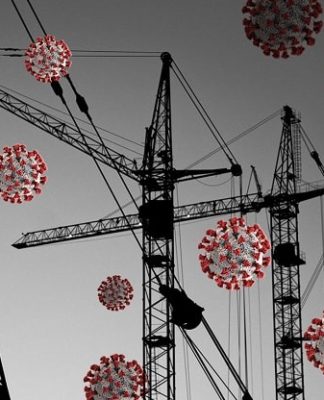16 May 2018 – 0:00

The Peninsula
DOHA: Chinese economy is set to slow over the next couple of years on the back of policy measures to cool the property market, rein in leverage in the shadow banking sector, and further cut capacity in old industries such as steel and aluminium.
Potential GDP growth is on a downward trend due to demographic headwinds and slowing productivity. Nevertheless, GDP growth edged higher to 6.9 percent in 2017 from 6.7 percent in 2016 on the back of robust external demand, marking the first acceleration in annual growth since 2010.
QNB Group noted in its ‘China Economic Insight 2018’ published yesterday that it sees China’s GDP growth slowing to 6.4 percent in 2018 and 6.1 percent in 2019 on the back of policy tightening measures designed to cool the property market, reign in leverage in the shadow banking sector, and cutting excess capacity in old industries such as steel and aluminium.
The current account surplus is forecast to continue narrowing to 1 percent of GDP in 2018 and 0.9 percent of GDP in 2019 on the back of higher oil prices, and still robust domestic demand driving import growth.
QNB expects the authorities to keep CNY broadly stable against the trading partner basket in 2018 and 2019, which implies an appreciation of just under 4 percent against the US dollar. QNB analysts believe the authorities will view this as striking an appropriate balance between the need to maintain a competitive exchange rate, while avoiding trade frictions with the US authorities against whom China maintains a large trade surplus.
“We expect a modest fiscal consolidation over the next two years as the central government tightens rules on the ability of local governments to participate in Public-Private Partnerships (PPPs) to build local infrastructure,” QNB analysts noted.
The augmented fiscal deficit, which incorporates significant local government spending and revenue operations that are off-budget, should decline to 12.1 percent of GDP in 2018 and 2019.
Bank deposit growth in China should stabilise at 8.2 percent in 2018 and 2019, similar to the level in 2017 as they begin to compete more aggressively with money market funds.
Bank credit growth is expected to stabilise at around 10 percent, despite a slowing economy and higher lending rates.
As the authorities crack down further on shadow lending, banks are increasingly bringing previously off balance sheet forms of lending (to nonbank financial institutions) back onto their balance sheets.
This should underpin bank credit growth for the next couple of years.
The non-performing loans (NPLs) ratio is expected to remain stable over the next two years at level prevailing in 2017 given the still-solid growth outlook, and steps taken to reign in shadow banking activity.


























